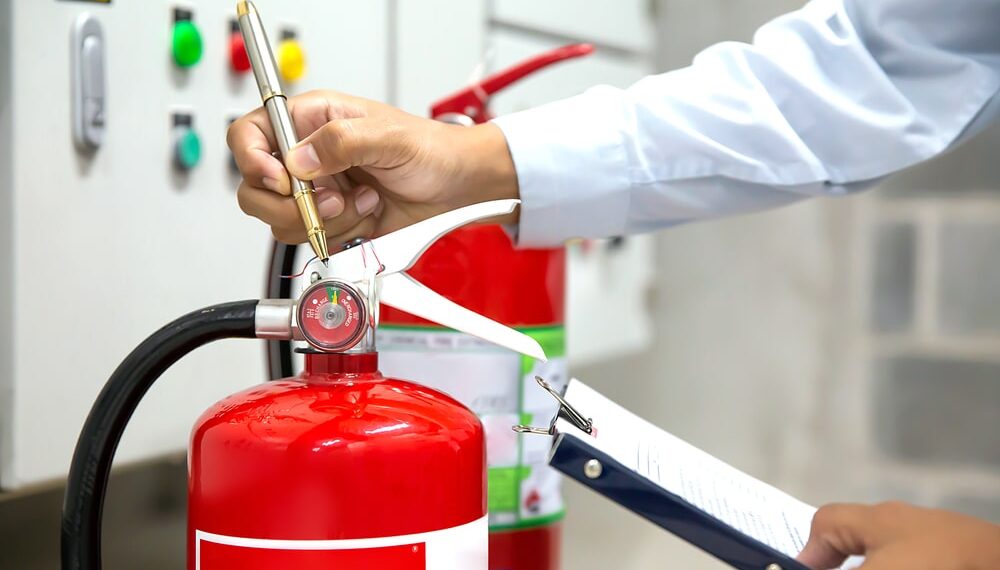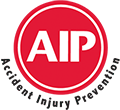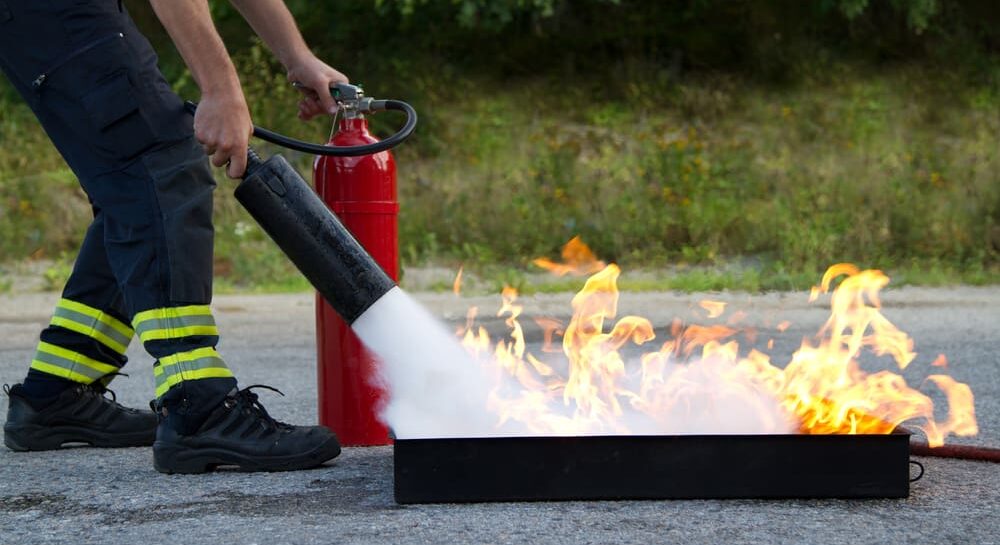Most people know that having a fire extinguisher is crucial for homes and is legally required for businesses. However, many residents and employees aren’t properly trained in how to use one. The good news is, fire extinguisher training in Calgary is included in our online Fire Safety Awareness course. In this article, we detail why fire extinguisher training is important and touch on some of the information you’ll learn in the safety course.
Why is fire extinguisher training important?
It’s one thing to “know” what to do in the event of a fire, everyone knows to evacuate the premises, and if they’re knowledgeable in fire extinguisher best practices, attempt to put out the fire. However, until the proper training has been administered, all of the information in the world is nothing more than a mental concept – it’s a theory.
That’s why the proper training is paramount. It bridges the gap between mental concept to full understanding of how to conduct yourself in a real, live fire. But more than that, fire extinguisher training gives you the tools and knowledge needed to make informed decisions in a hazardous situation. And such decisions can save lives.
Some additional advantages to fire extinguisher training include:
- A team of employees educated in fire extinguisher and fire safety best practices
- Minimization of lost property
- Prevention of serious injuries or even death
- A more confident workforce in the event of a fire
- Assists with preventing fires from occurring in the first place
Did you know that improper use of a fire extinguisher can lead to injuries? Not only that, but it will be ineffective in putting out a fire. Although they come with directions, people often find it a challenge to read the directions when a fire is spreading fast. Going through fire extinguisher training prepares you with the knowledge and the ability to get a fire under control as quickly as possible, and without delay.
The different classes of fires
In a fire safety course, participants learn about the different types of fires, which are classified depending on the material involved. The following guide is how the Canadian Centre for Occupational Health and Safety categorizes fires. We’ve included a simple way to remember them:
- Class A - Fires involving ordinary combustibles such as paper, wood, cloth, rubber, or plastics. These fires generally leave an Ash.
- Class B - Fires involving flammable or combustible liquids, gases, oil, paints, or lacquer. These materials Boil or Bubble.
- Class C - Fires involving energized (live) electrical equipment such as motors, appliances, or power tools. These fires involve electrical Current.
- Class D - Fires involving combustible metals such as magnesium, titanium, sodium, and potassium. These fires are Difficult to come by. It’s rare that you’ll ever have to deal with these types of fires unless you work in a lab or factory that uses these materials.
For each type of fire, there are different types of extinguishers that are most effective in controlling the fire. And when your workforce understands the myriad of fire variations in addition to the fire extinguishers needed to put them out, you’ll have a more competent team, which as a result, creates a safer workplace for everybody.
 Fire extinguisher training
Fire extinguisher training
What are the different types of fire extinguishers?
There are three main types of fire extinguishers and crucial limitations to know about each. Using the wrong type can make a fire worse - however, the label will detail what types of fires it should be used on. (For example: the label “ABC” will let you know that the extinguisher will work on fires classified as A,B, or C)
- Dry chemical extinguishers - This is the most common type of extinguisher and you’ll see them labelled for the types of fires they’re designed to control. (ie: "DC" for "dry chemical", "ABC" for A,B,and C fires, or • "BC" for class B and C fires. When activated, dry chemical extinguishers discharge fine powder to break the chemical reaction and create a barrier between the fuel and the oxygen in the air.
- Water extinguishers - This type of extinguisher removes the heat from burning materials for Class A fires. They are pressurized with air and filled about two-thirds with water. Water extinguishers should never be used on:
Electrical fires as they can increase the risk of electrocution. Water extinguishers should also never be used
Flammable liquid or cooking oil fires as it can spread the liquid and the fire - Carbon Dioxide (CO2) extinguishers - Pressurized CO2 controls Class B and C fires by blanketing the fuel and displacing oxygen. CO2 extinguishers should never be used:
In confined spaces without respiratory protection
On Class A fires because there is a risk of re-ignition after the CO2 disperses
With each type of fire extinguisher being designated to a specific fire variation, understanding the differences of fire variations and fire extinguishers is crucial to the safety of your workers in addition to preservation of your workspace. And these are topics that are covered extensively in our fire extinguisher training course.
Regardless of what extinguisher you use, remember the PASS acronym:
- Pull - Pull the pin
- Aim - Aim at the leading edge of the fire
- Squeeze - Squeeze the handle to discharge the extinguishing agent
- Sweep - Sweep with the nozzle to distribute extinguishing agent over the entire fire
Conclusion
Fires are preventable – they don’t have to happen. And the best way to prevent these events from taking place is through proper training and education. That’s why we here at AIP Safety are dedicated to the continuous improvement of workplace safety.
We provide educational training, applicable tools, as well as useful resources to help you and your employees remain safe while on the job. Contact us today to learn more.

